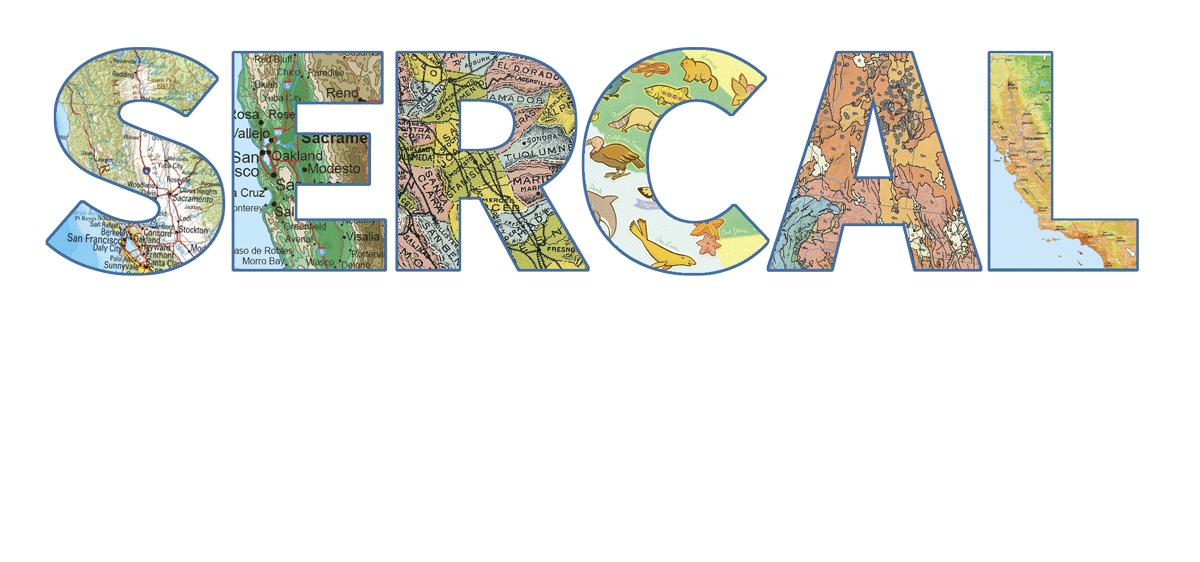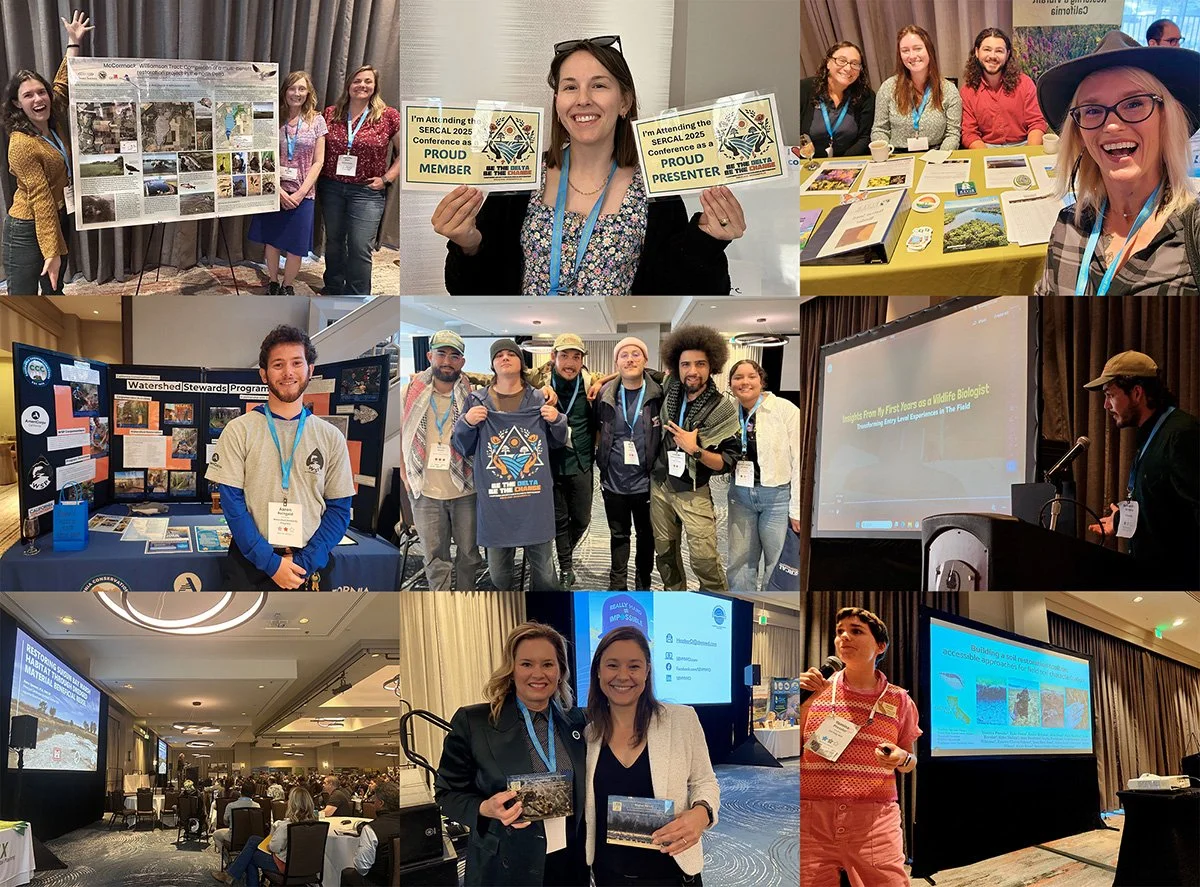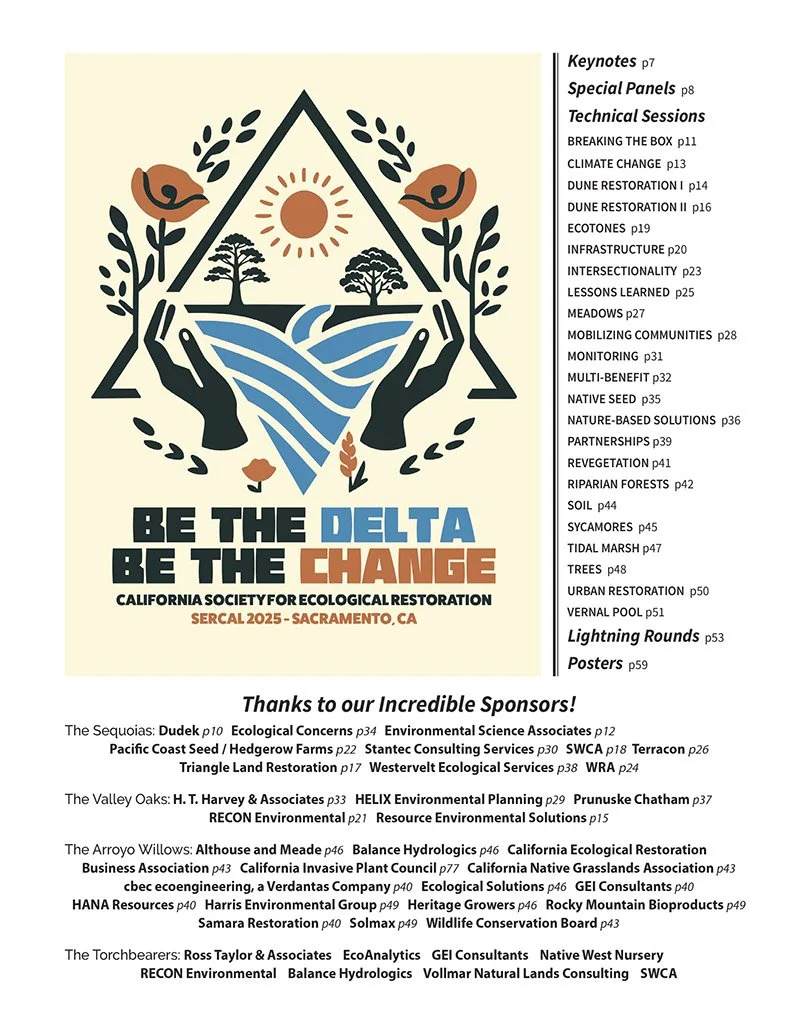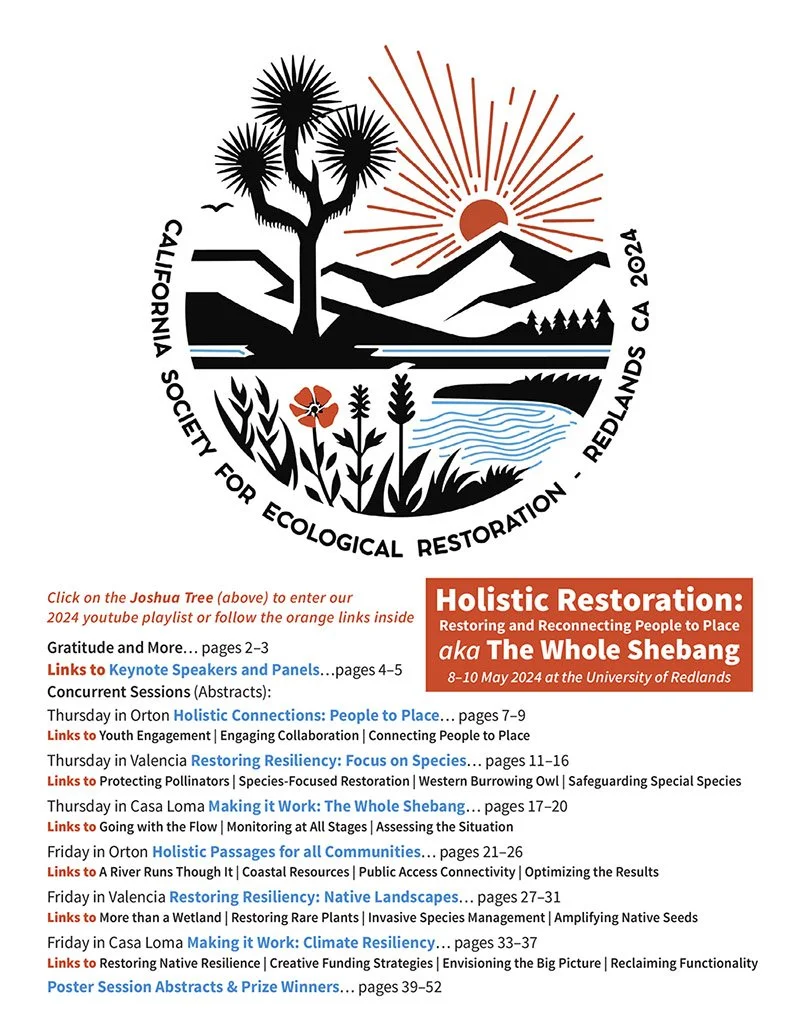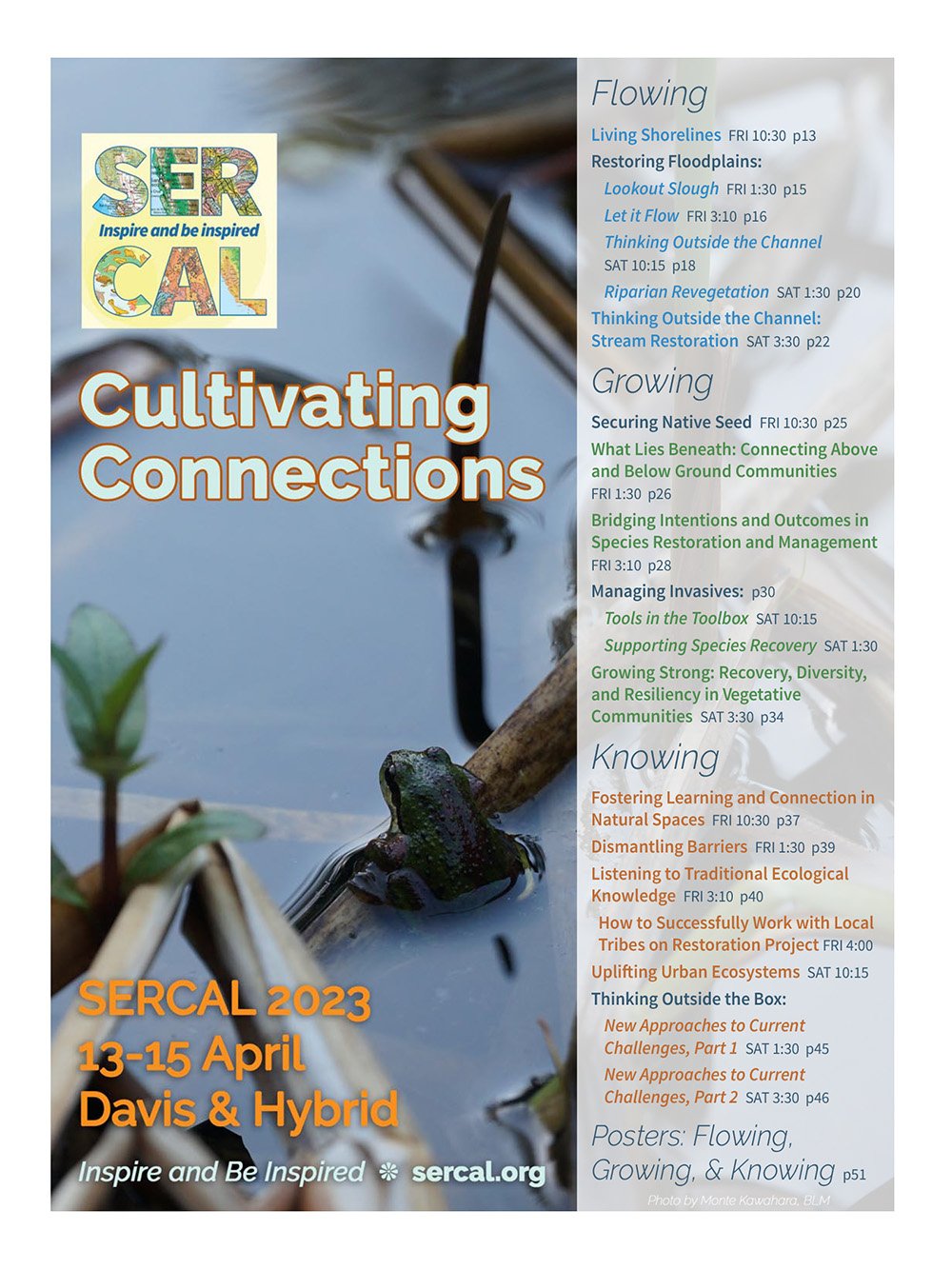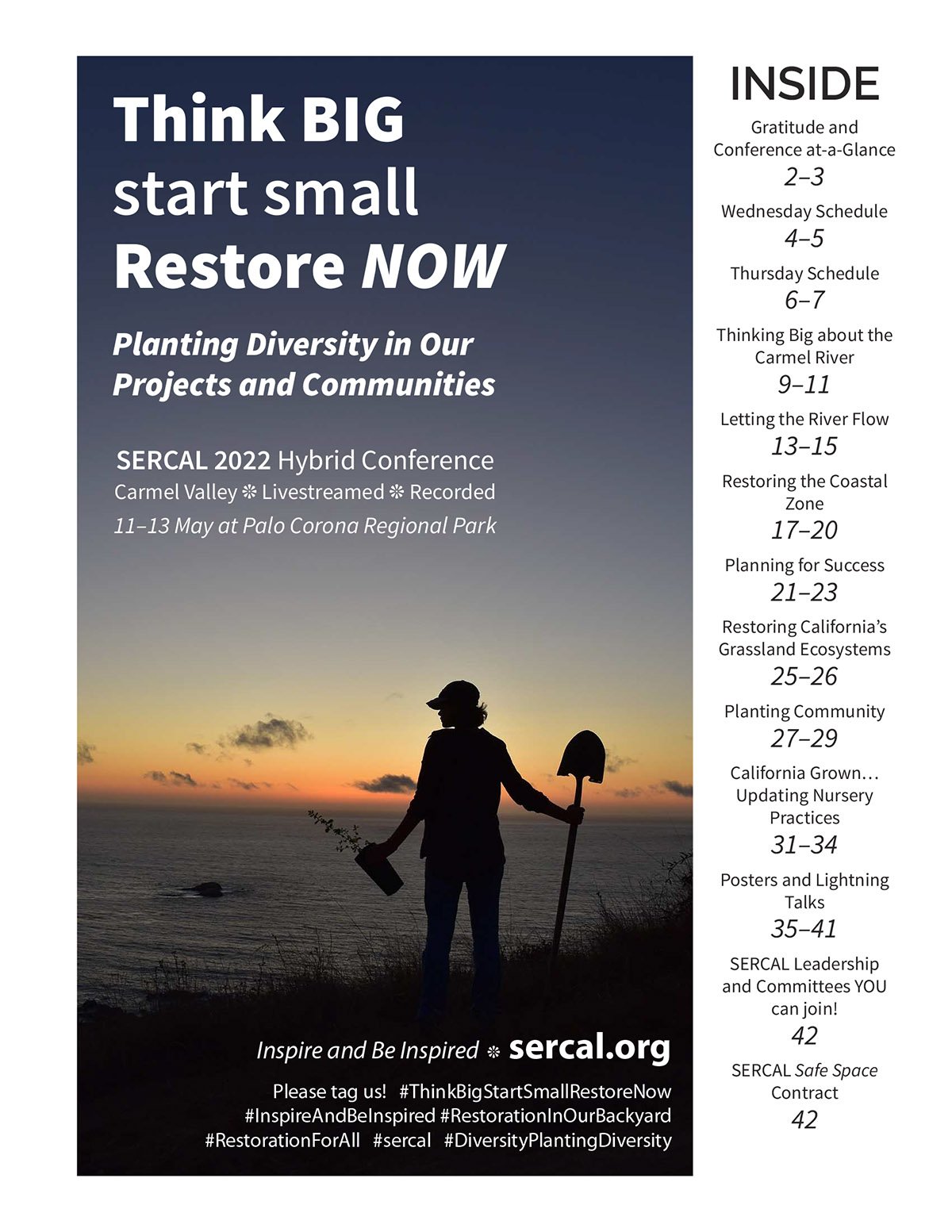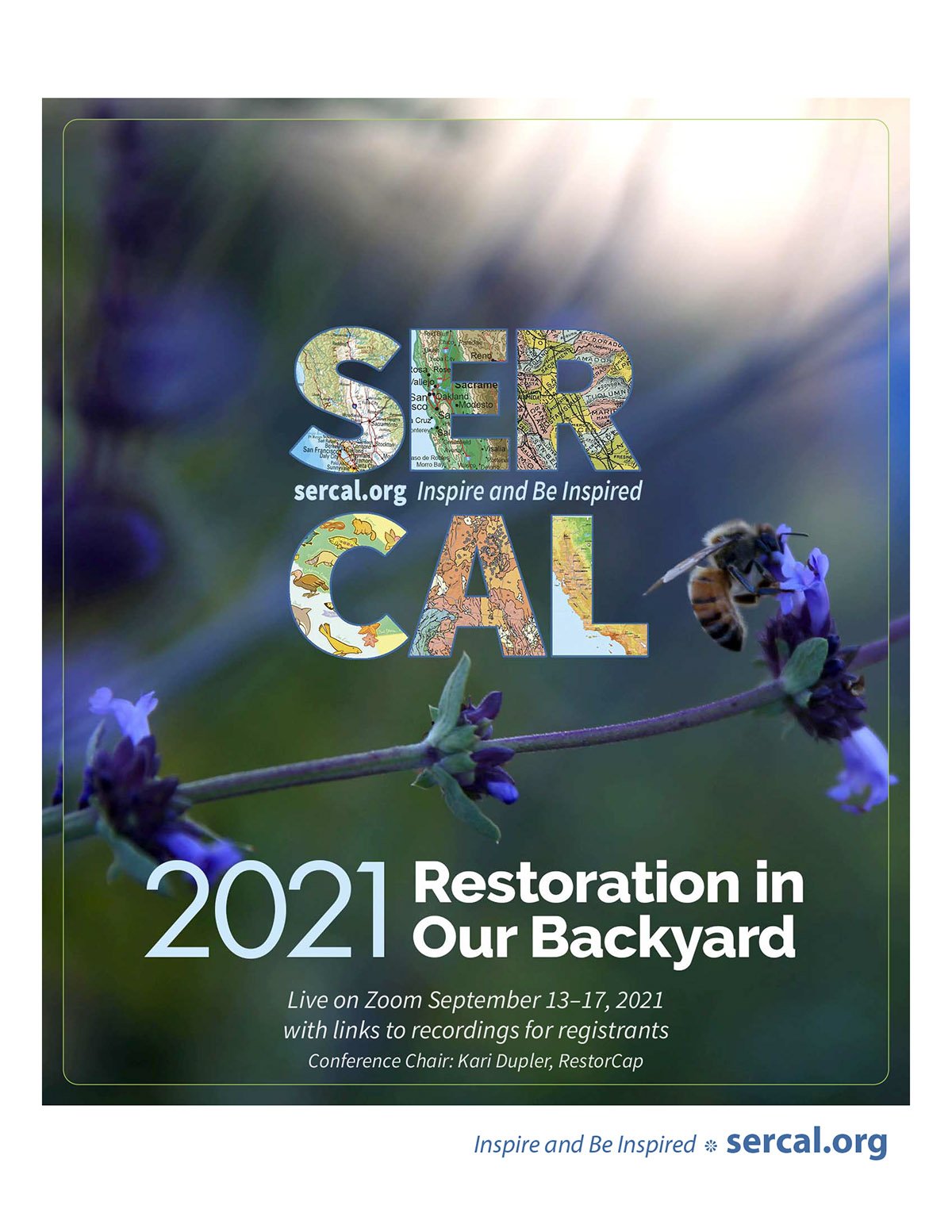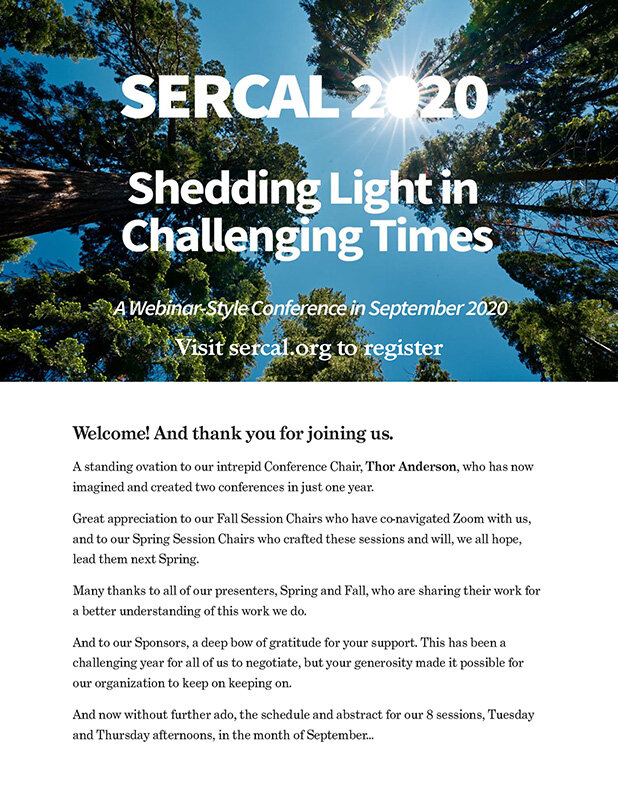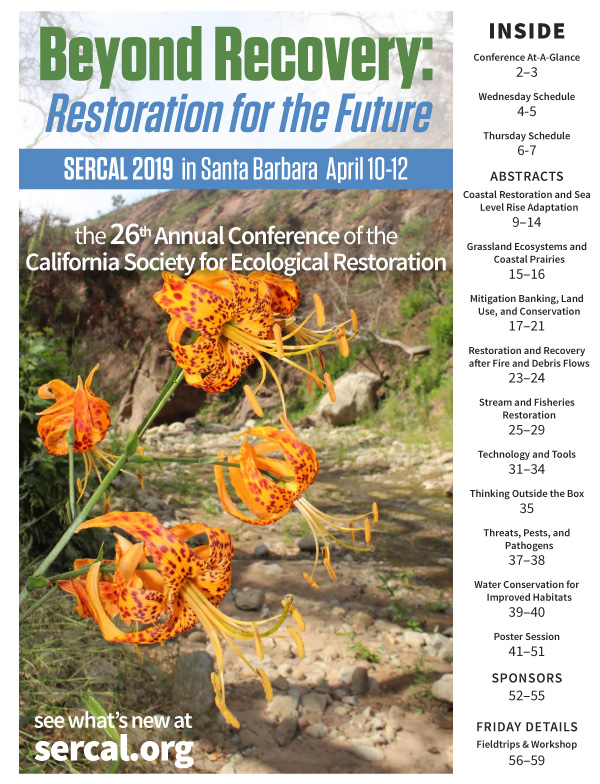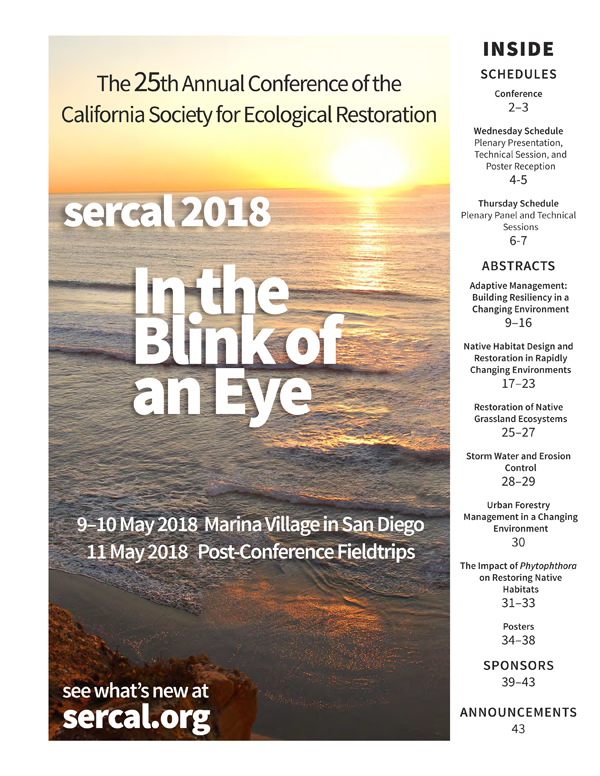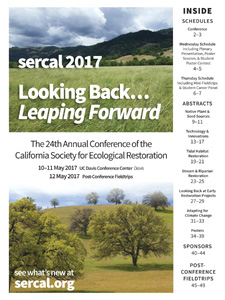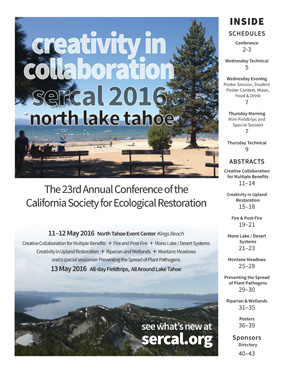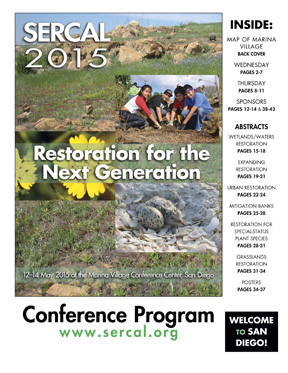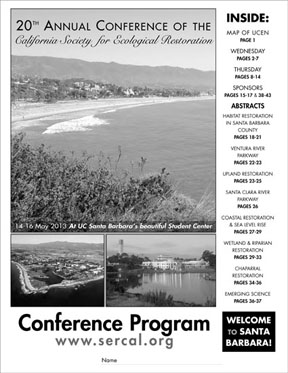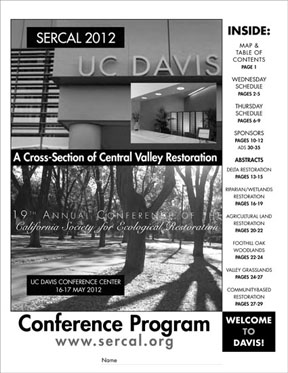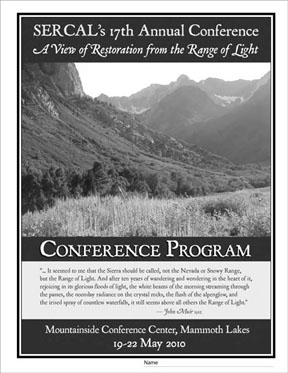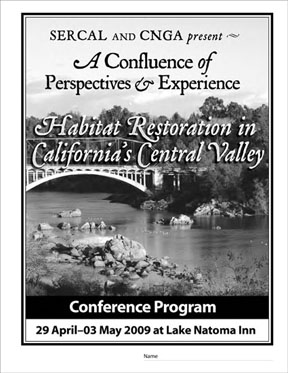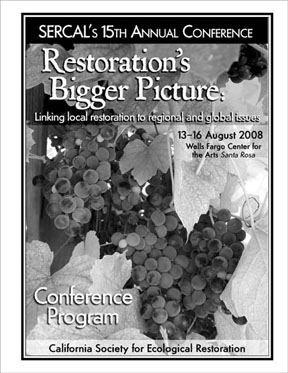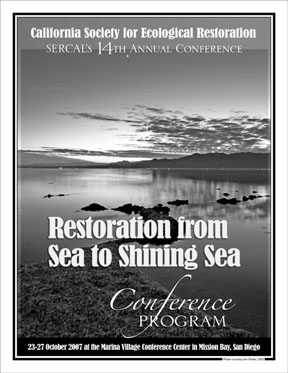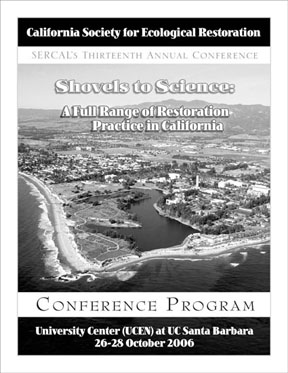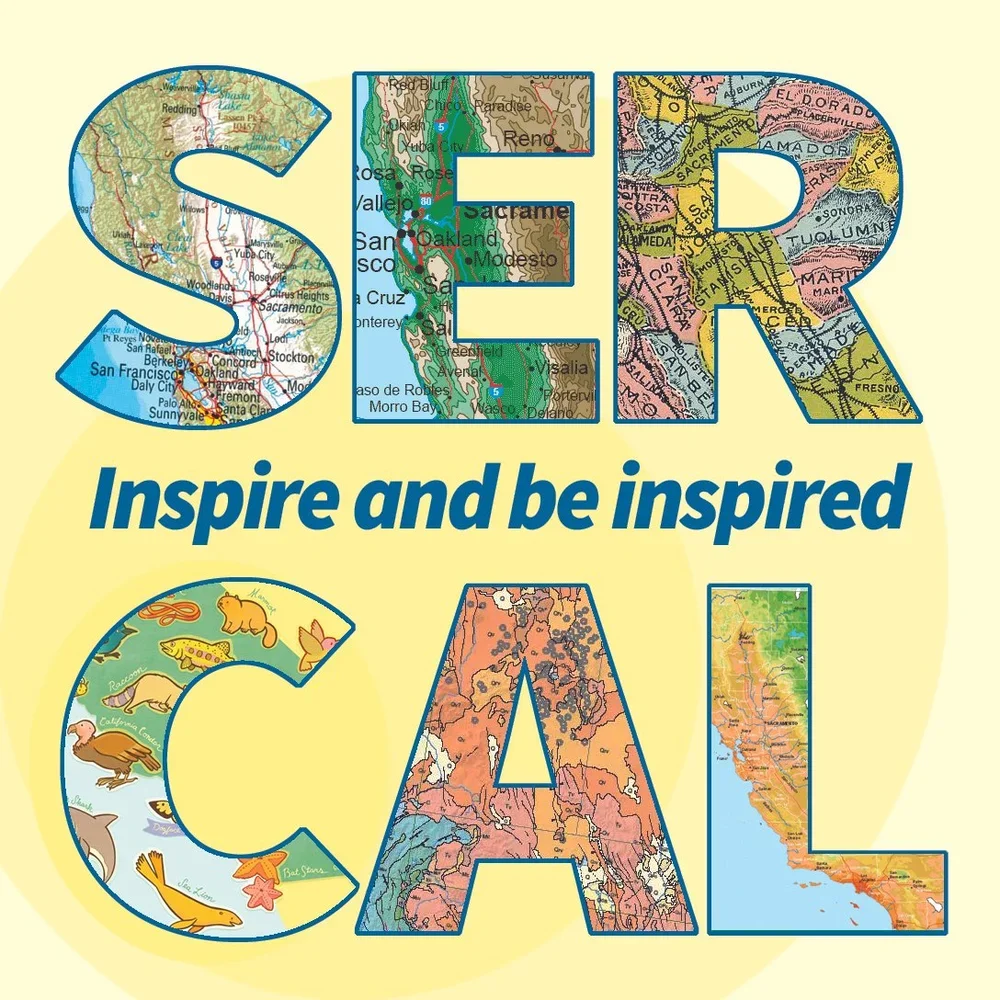What is a SERCAL Conference?
Planning forward to a more resilient California
Since its founding 30+ years ago, the California Society for Ecological Restoration has been the key statewide organization in advancing the science, art, and practice of restoring California’s native and unique habitats. Most if not all of our work directly contributes to statewide goals, initiatives, and key programs — 30x30, Cutting the Green Tape, water and fire resilience, climate mitigation measures, key public and green infrastructure projects, environmental markets, ecological workforce growth, and public land management, as well as California Fish and Wildlife and State Water Board resource policies.
What does it mean when we say Restoration for All?
Ecological restoration has always attracted a variety of disciplines, industries, endgoals, and skill sets. More and more, our conferences reflect this — from our keynote speakers, to our session themes, to the presenters themselves. Over the last few years, we have specifically targeted the expansion of our conference to Next Gen and members of underserved communities. Our intent? To facilitate a diverse industry that is nimble in how it responds to future challenges. Thus, making SERCAL conferences accessible — easy to get to, affordable to attend — has become a key factor in choosing where we convene.
Here’s what’s inside the box of Restoration’s Finest Annual Gathering:
Get exposure to the latest in technology and new ways of problem-solving
Listen to inspiring, eye-opening presentations and introduce yourself to the speakers during a break or lunch.
Attend the Poster Session, meet The Next Generation (students and emerging professionals), and learn fresh new perspectives on integrating science with practice and community engagement.
Meet new colleagues you could be working with throughout your career
With three concurrent sessions over the two days, you’re going to see who else has the same interests!
The Mentorship Program offers more than you might think — Mentees can find their next employer and Mentors can find great new recruits.
Relax and enjoy meeting like-minded, engaged, friendly people
There’s something for everyone, whether it’s the session topic, a delicious meal, or the opportunity to explore ideas in a wide-ranging or focused way.
Registration includes all hosted receptions, brunches, dinners, morning and afternoon snack buffets — there are no hidden costs! All you need is to get yourself there. We’ll have a list of hotels (and a campground!) offering a conference discount — and guess what? All these lodging options are only a few steps away from the River Lodge! We’ll continue offering some stipends to offset registration, travel, and lodging costs for students and emerging professionals from under-served communities.
Of course you’re probably going to want to set aside at least a little cash for the Raffle, featuring great items, large and small, donated by the Board and friends of SERCAL. It’s a win-win — proceeds from the Raffle go to provide waived registrations and stipends for The Next Generation.
Enjoy Highlights from Restoration’s Finest Annual Gathering!
Jump to Recordings from: 2025 | 2024 | 2023 | Explore Additional Past Conferences
Being in community is ESSENTIAL to our work and SERCAL 2025 is proof positive that our community is growing stronger every year!
Be the Delta, Be the Change — SERCAL 2025 in Sacramento
At 450+ attendees, we FILLED the Grand Ballroom and the Poster Session did the same downstairs!
The goodwill of 62 Next Gen volunteers kept the engine humming!
YOU raised the roof with $8,184 in sales (swag, raffle tickets, & books), generously gave $650 to offset reduced fees for underfunded colleagues, and $1,500 for Next Gen stipends
AND have we said lately that we love the support of our 2025 Sponsoring Members? Here they are! Let's all stand up and give them a round of applause!
Whether this was your first conference or you remember the days of slide projectors, we are so grateful to be in community with you!
Here is a link to the PROGRAM BOOK. Inside you will find the schedules, the abstracts, more! Click on the purple links to the recorded sessions to be instantly transported to the recorded sessions on youtube.
Holistic Restoration — Restoring and Reconnecting People to Place aka The Whole Shebang: SERCAL 2024 in Redlands
Rethinking our annual conference amplified its impact in 2024
What an amazing gathering we had at the University of Redlands in May! Led by the vision of Co-Chairs Lindsay Teunis and Sonya Vargas, supported by the Conference Advisory Committee, and manned and womanned by attending Leadership Team members and Next Gen volunteers, it truly showed that “it takes a village to put on a conference.” ;-) Wielding the power of the group — income from our amazing sponsors, registrations, and the “students at heart” who glamped with us in the dorms — we augmented our support of the “Next Generation” (aka Next Gen) of students and emerging professionals with comped or low-cost lodging, travel reimbursement, and/or carpool coordination. In addition, we continued waiving registration for those who presented and/or volunteered. The return on this community investment (thank you again!) was palpable, inspiring, and you could almost hear the hive buzzing as connections were made.
Here is a link to the PROGRAM BOOK. Inside you will find the schedules, the abstracts, and links to the recorded presentations on youtube.
Cultivating Connections: SERCAL 2023 in Davis
José González, Latino Outdoors — Watch his keynote: Healing Severed Connections
Nailah Pope-Harden, Climate Plan — Watch her keynote: The Little Community that Could
Earyn McGee, PhD, “AfroHerper" — Watch her keynote: #FindthatLizard: Ecology, Science Outreach, and Supporting Underrepresented Groups in Herpetology and Natural Resources
Brad Henderson and Jen Olson —Watch their keynote: Cutting the Green Tape Program at CDFW
Brook M Thompson, Karuk and Yurok Tribes — Watch her keynote: A Time “Before” “American” History
Brook M. Thompson and Ivan R. Senock, moderated by Allegra Bukojemsky — Watch the panel: How to Successfully Work with Local Tribes on Restoration Projects
Explore Additional Past Conference Themes…
Think Big, Start Small, Restore Now: Planting Diversity in Our Projects and Communities | 2022 in Carmel Valley, Live-Streamed on Zoom, and Recorded in its Entirety
Restoration in Our Backyard | 2021 Webinar-Style Conference
Shedding Light in Challenging Times | 2020 Webinar-Style Conference
Beyond Recovery: Restoration for the Future | 2019 in Santa Barbara
In the Blink of an Eye | 2018 in San Diego
Looking Back… Leaping Forward! | 2017 in Davis
Creativity in Collaboration | 2016 in Tahoe
Restoration for the Next Generation | 2015 in San Diego
Working Collaboratively for Successful Restoration | 2014 in Santa Rosa
SERCAL's 20th Annual Conference | 2013 in Santa Barbara
A Cross-Section of Central Valley Restoration | 2012 in Davis
An Integration of People and Disciplines | 2011 in San Diego
A View of Restoration from the Range of Light | 2010 in Mammoth Lakes
A Confluence of Perspectives and Experience, a Joint Conference with CNGA | 2009 in Folsom
Restoration's Bigger Picture: Linking Local Restoration to Regional and Global Issues | 2008 in Santa Rosa
Restoration from Sea to Shining Sea | 2007 in San Diego
Shovels to Science: A Full Range of Restoration Practice in California | 2006 in Santa Barbara
